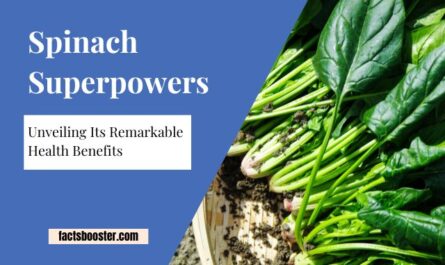At its core, clean food eating champions the consumption of unprocessed, natural foods such as fresh produce, whole grains, and lean proteins. Embracing this philosophy means prioritizing nutrition and balanced diets that exclude additives found in processed offerings.
This article aims to guide beginners through the essentials of adopting a clean food lifestyle, focusing on the importance of integrating vegetable-based meals, fruit snacks, and sustainable eating practices into their daily routines.
Key Takeaways:
- Understanding Clean Food: The significance of opting for unprocessed and natural foods.
- Nutrition and Wellness: The health benefits of a clean, balanced diet.
- Practical Guidance: Tips and recipes to help beginners incorporate clean eating into their lifestyles.
What is Clean Food?
Clean food forms the cornerstone of healthy eating. It emphasizes unprocessed, natural, and organic foods that nourish the body and promote sustainable eating habits. Think fresh produce, whole grains rich in dietary fiber, and lean proteins.
Selecting these food types ensures nutrition that supports a balanced diet, brimming with antioxidants and void of harmful additives. The benefits of choosing clean foods have been studied extensively.
Individuals have noticed improvements in digestion and energy levels. Furthermore, adopting a diet centered on vegetable-based meals and fruit snacks has been linked to better skin health and effective weight management. (1)
This transition to clean eating not only fosters personal well-being but also encourages environmental sustainability through the support of locally sourced foods.
Integrating Clean Food into Your Dietary Routine
Initiating a diet rich in clean food necessitates meticulous selection and meal planning. Prioritize fresh produce, whole grains, and lean proteins to ensure you’re integrating nutrient-dense options into every meal.
Review food labels carefully for hidden additives or processed ingredients. Planning meals in advance will help you maintain a balanced diet, focusing on vegetable-based meals and fruit snacks for their high dietary fiber and antioxidant content.
Substituting processed snacks with natural food options can significantly impact your nutrition. Consider hydration a part of your clean eating plan, emphasizing water and herbal teas over sugary beverages.
Read more:
The Health Benefits of Clean Eating

Adopting a diet rich in clean food could transform your well-being. Improved digestion has often been reported; whole grains and dietary fiber play significant roles here. They keep your gastrointestinal system running smoothly.
Weight management becomes more achievable with clean eating. Unprocessed foods, full of nutrition, often contain fewer calories yet make you feel fuller longer. Consequently, enhanced energy levels become a noticeable benefit.
Natural foods, packed with antioxidants, fuel your body efficiently. Better skin health is another incredible advantage of clean eating. Antioxidants, along with hydration from fresh produce, can give your skin a glowing, healthier appearance.
Clean Food Recipes and Meal Ideas
Embarking on a journey towards healthier eating transforms not just meals but life itself, emphasizing clean food that grounds us in the benefits of natural, unprocessed ingredients.
By focusing on fresh produce, whole grains, and lean proteins, you foster a connection to foods that fuel the body efficiently and deliciously. Clean eating isn’t about stringent dieting but embracing a lifestyle that prioritizes nutrition and sustainability.
From the crispness of a morning apple to the robust flavors of a vegetable-based dinner, each meal is an opportunity to nourish your body with what it truly needs. Let these ideas inspire your transition towards a balanced diet filled with meals that are not only healthy but joyfully satisfying.
A. Breakfast Options
Kickstarting your day with clean food sets a positive tone. Clean eating breakfast options have been shown to enhance energy levels and support healthy digestion. Consider a bowl of oatmeal topped with fresh fruit and a sprinkle of chia seeds.
This combination offers a powerhouse of dietary fiber, antioxidants, and hydration first thing in the morning. Alternatively, a smoothie made from organic leafy greens, a variety of fruits, and a scoop of protein powder will provide balanced nutrition and a dose of essential vitamins.
For those who lean towards savory options, an omelet filled with vegetables and lean proteins, accompanied by whole grains, makes for a satisfying and nourishing start.
Each of these choices emphasizes unprocessed food, emphasizing the importance of incorporating natural and nutrient-rich ingredients into your daily routine.
B. Lunch and Dinner Ideas
Incorporating vegetables into your midday and evening meals will revolutionize your diet. Start by crafting dishes centered around leafy greens and brightly colored vegetables. They are not only nutritious but also add a burst of flavor and texture.
Next, integrating lean proteins, such as grilled chicken or fish, supports muscle health and keeps you feeling fuller for longer. Quinoa or brown rice can serve as your foundation, delivering the necessary dietary fiber for optimal digestion.
- Vegetable stir-fry with tofu: A vibrant mix of your favorite vegetables sautéed with tofu provides a perfect balance of flavor and nutrition.
- Grilled chicken salad: Topped with an assortment of fresh produce, this dish is both satisfying and loaded with antioxidants.
- Whole grain pasta with lean beef: Accompanied by a tomato-based sauce, it offers a hearty meal that combines taste with a nutritional punch.
C. Snack Suggestions
Snacks are pivotal in maintaining energy levels and preventing overeating during main meals. Fruit snacks, brimming with antioxidants, offer a quick, nutritious option. Lean proteins, like a handful of almonds, provide sustained energy and curb hunger effectively.
For those preferring something savory, vegetable-based meals in smaller portions, such as carrot sticks with hummus, embody the essence of clean eating.
Not to forget, hydration plays a significant role, making water or herbal teas excellent companions to any snack choice. Integrating these simple yet wholesome snacks into your diet will ensure you’re well-nourished between meals.
Overcoming Challenges and Obstacles
Embarking on your journey toward clean eating will undoubtedly present challenges. Dealing with temptations looms as a formidable barrier. You may find yourself drawn to the convenience of processed foods.
Despite this, recognizing the benefits of choosing unprocessed, natural foods can empower you to make healthier choices. Alternating your indulgences with healthier, clean alternatives can aid in gradually reducing cravings.
Addressing budgetary concerns might seem daunting initially. Organic and natural foods often come with a higher price tag. However, shopping at farmers markets and selecting seasonal produce can mitigate these costs. Planning your meals in advance ensures you only buy what you need, reducing waste and saving money.
Managing time constraints requires strategic planning. Preparing meals at home might take effort, but the nutritional benefits are unparalleled. Allocating specific days for meal prep can streamline your week, ensuring you always have access to nutritious meals, even on your busiest days.
Sustainability and Environmental Impact
Clean eating has often been linked with enhanced personal health. Yet, its benefits extend beyond the individual, reaching into the broader realms of sustainability and environmental impact.
Embracing locally sourced foods has grown crucial. By choosing products grown close to home, you’ve directly contributed to the reduction of transportation emissions. This simple act aids in lessening the carbon footprint associated with long-distance food transport.
Moreover, one cannot overlook the significance of reducing food waste. It’s estimated that a staggering amount of the food produced globally goes to waste every year. By planning meals carefully and storing food properly, you are playing a pivotal role in combating this issue. This effort not only saves resources but also supports a more sustainable food system.
Finally, supporting sustainable agriculture practices shines as an integral aspect of clean eating. Practices such as crop rotation, organic farming, and the conservative use of water promote the health of our planet. They help preserve biodiversity and ensure that the food you consume enhances not just your health but also the well-being of the Earth.
Conclusion
Throughout this journey, you have encountered the essence of clean eating, from embracing unprocessed food to integrating fresh produce and lean proteins into your meals. Recognizing the benefits, such as enhanced energy levels and better digestion, stands as a testament to the power of natural, organic food choices.
Let this guide serve as a beacon, encouraging you to continue exploring wholesome, vegetable-based meals and sustainably sourced options. Remember, a balanced diet rich in dietary fiber, antioxidants, and hydration will not only improve your health but also support a sustainable environment. Take the leap and make clean eating a cornerstone of your lifestyle.


